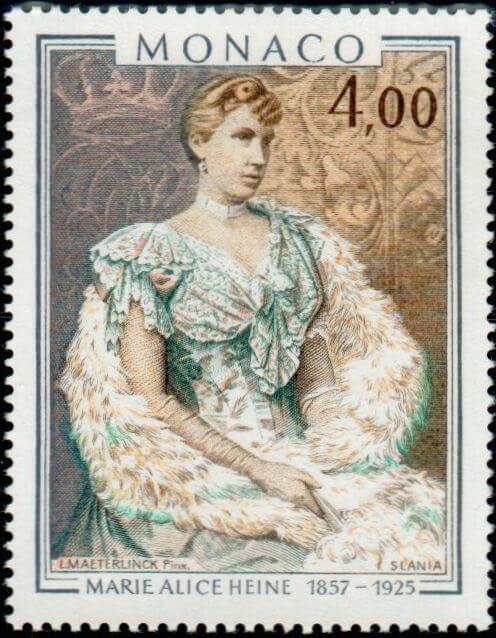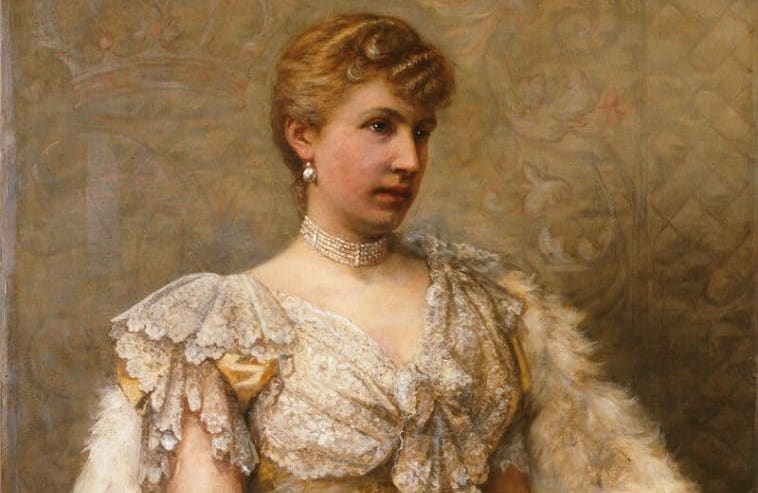Patron of the arts, prominent figure of Parisian salons, literary muse, American. The life of Alice, Princess of Monaco, is gilded with legend.
Alice Heine was born in the French quarter of New Orleans in 1858 to an affluent family. Her mother is of French-Alsatian descent, while her father, Michel Heine, is a banker turned real-estate developer and cousin of German poet Heinrich Heine. Alice Heine’s stay in Louisiana is short-lived. When the American civil war breaks out, the family moves back to France.

Upon their return to France, the Heines become influential figures in the court of Napoleon III and the firm of Michel Heine even finances the Franco-Prussian war. Her parents’ prominence grants Alice Heine a privileged position on the 19th-century marriage market and a few weeks after her 17th birthday, she marries the 7th Duke of Richelieu, joining the French nobility.
The marriage is a step up the social ladder for the new money family. However, like her Louisana days, Alice Heine’s marriage is also unexpectedly cut short. In 1875, the Duke of Richelieu dies during a trip to Athens. At 22, Alice Heine is left widowed with two young children.
Alice, Princess of Monaco
Alice Heine first meets Albert I of Monaco in Madeira in 1879. At the time, the Hereditary Prince is still caught up in an unsuccessful marriage with Lady Mary Victoria Douglas-Hamilton. They begin a relationship in the early 1880s and marry in 1889.
Prince Albert I was deeply in love with her. It is one of the very first love marriages of the Principality
Theirs is unusual marriage for the Grimaldi Dynasty, stresses Thomas Fouilleron, director of the Monaco Palace Archives. “Prince Albert I was deeply in love with her. It is one of the very first love marriages of the Principality,” he explains. Furthermore, Albert I marries Alice Heine against his father’s wishes. “Even if she was the widow of the Duke of Richelieu, she was also Jewish, which was not what Prince Charles III, a deeply religious man, wished for the heir to the throne.”
The couple eventually separates in 1902 without having had children. However, the marriage is never annulled, and the couple remains legally married until the death of Albert I in 1922.
Her American ancestry bequeathed her with great beauty and immense charm.
Garbiel-Louis Pringué
A prominent figure of the Belle Époque
Alice Heine fascinates her contemporaries. She collects illustrious friendships, including Queen Alexandra of Britain and the writer Maupassant. She writes her letters in red ink. She is said to be Proust’s muse. To the French, her transatlantic roots make her almost exotic. “Her American ancestry bequeathed her with great beauty and immense charm,” writes French writer Garbiel-Louis Pringué in 30 ans de dîners en ville.
In Monaco, Alice Heine founds an annual art exhibition and promotes the recently created Monte-Carlo Opera, establishing the Principality as a leading center for the arts. In Paris, she is a regular at the famous Belle-Époque salon of Geneviève Straus, where she would have crossed the likes of Sarah Bernhardt, Oscar Wilde, and Marcel Proust.
One should not imagine her to have kept American habits. On the other hand, yes, she certainly was very cosmopolitan
Thomas Fouilleron, director of the Monaco Palace Archives
Facts and fiction

The myth of Alice Heine starts with her birth. She is often described as Monaco’s first American Princess and is seen as a predecessor to Grace Kelly. However, the American Civil War started in 1861, meaning that the Heine family moved back to France when Alice was just three years old. According to Thomas Fouilleron, the Princess was very much European in her ways. “One should not imagine her to have kept American habits. On the other hand, yes, she certainly was very cosmopolitan.”
She is also said to have been the inspiration behind the character of the Princess of Luxembourg in Proust’s monumental novel In Search of Lost Time. However, Thomas Fouilleron says that history is a little more nuanced. “We cannot be sure whether she actually was a model for Proust or not. She certainly is an eminent figure of the Belle Époque, and of the salons littéraires that Proust frequented.” Yet, stresses Fouilleron, there is no proof of a close relationship between the writer and the Princess. “She is not Proust’s muse, but he obviously had crossed paths with her.”
Alice Heine is also credited with having founded the Ballet Russes, Monaco’s first ballet company – “a golden legend” –according to Thomas Fouilleron. “The Ballets Russes were created in 1912, but the couple separated in 1902. When the ballets were founded, Alice Heine had not returned to Monaco for a few years and was by then a persona non grata.”
In Monaco, Thomas Fouilleron says that Alice Heine left an ambivalent legacy. “On the one hand, she was cultured and dedicated to the arts. A beautiful avenue in Monte-Carlo still bears her name. On the other, she left Albert I, one of Monaco’s most beloved princes. So, I do think she is also seen as somewhat of a traitress in the collective memory.”
Alice Heine died in 1925 in Paris. She is buried in the Père Lachaise cemetery.
>> READ MORE: Meet the man holding the keys to Monaco’s history
>> READ MORE: The Grimaldis: Princes of Monaco for 700 years










